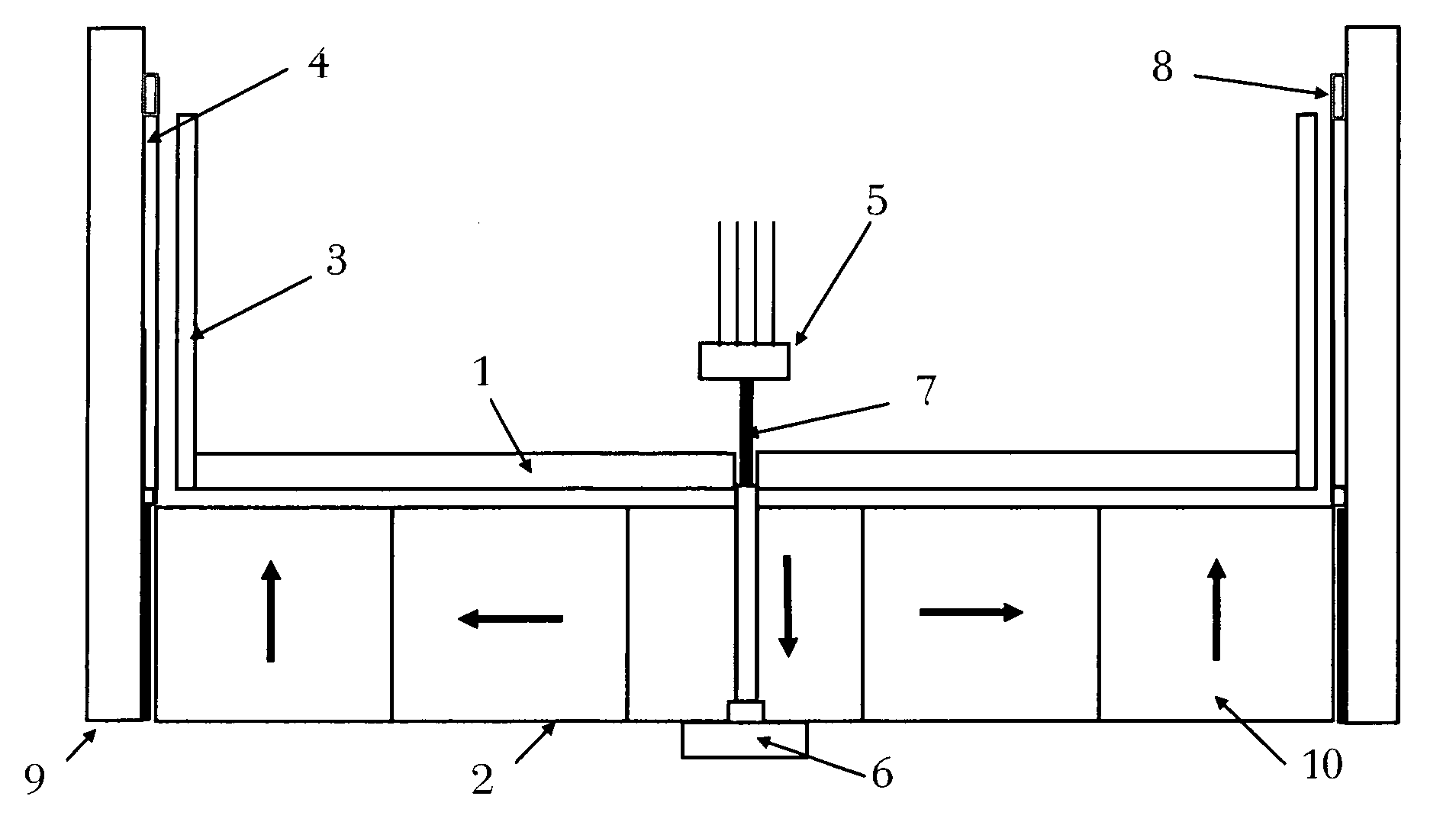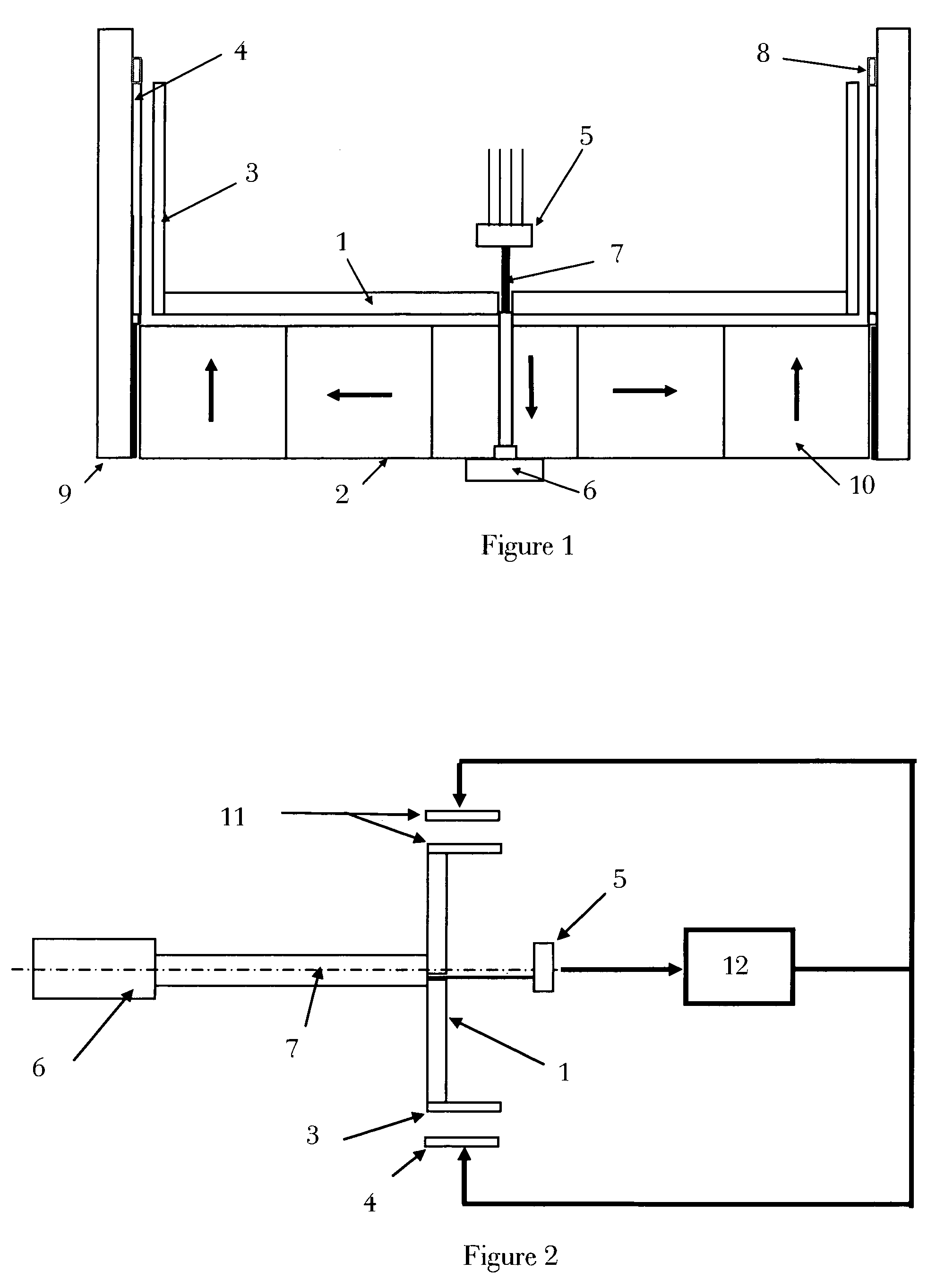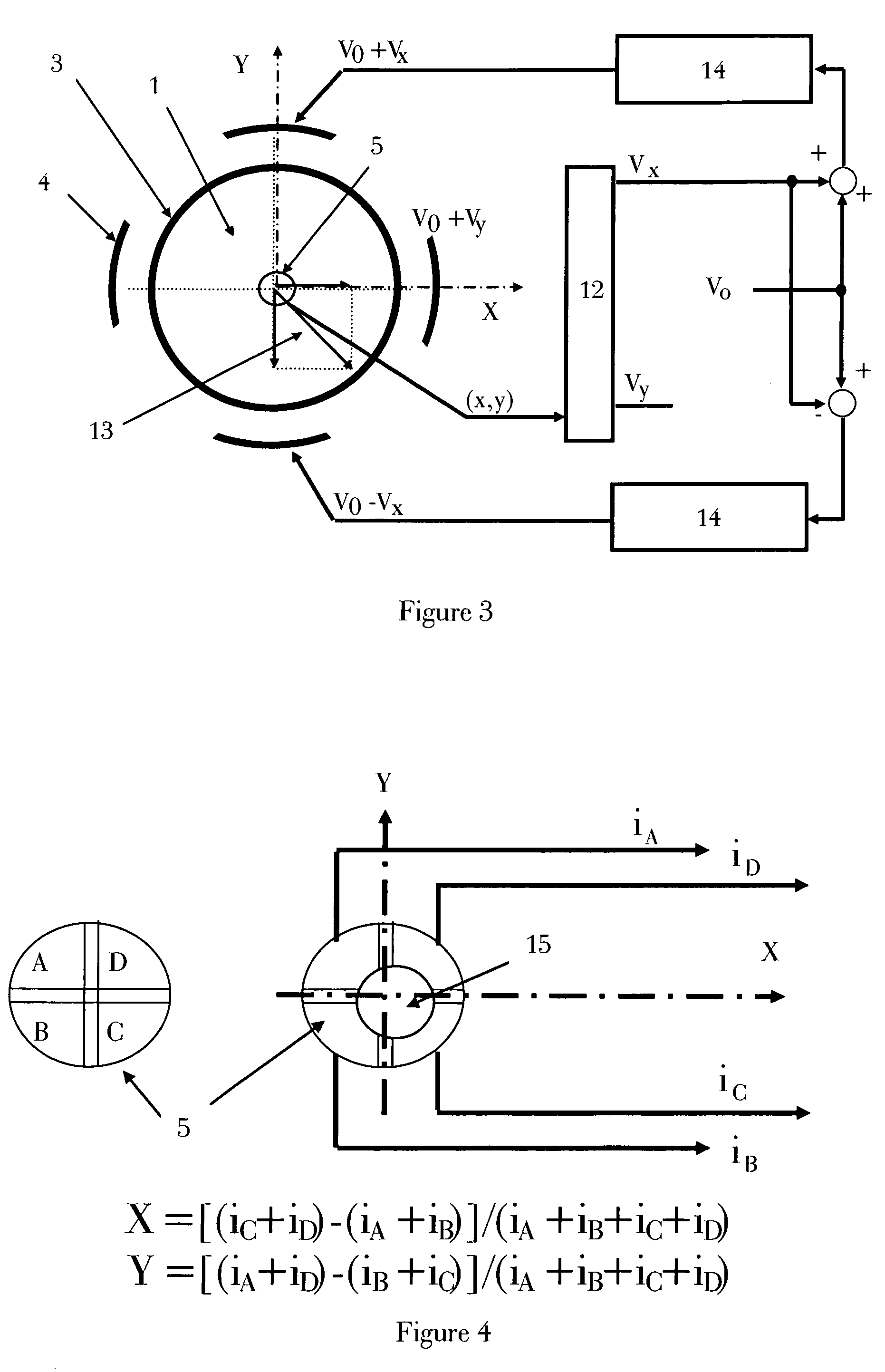Diamagnetic levitation system
a diamagnetic levitation and noncontact technology, applied in the direction of acceleration measurement in multiple dimensions, acceleration measurement using interia forces, instruments, etc., can solve the problems of inability to achieve stable levitation in the axial direction, limit all those inertial sensing systems, and sometimes critical power consumption of such systems
- Summary
- Abstract
- Description
- Claims
- Application Information
AI Technical Summary
Benefits of technology
Problems solved by technology
Method used
Image
Examples
Embodiment Construction
[0078]Several kinds of precision instruments can be designed on the principle of a diamagnetic material levitated over a 2D array of permanent magnets and kept in a precise position with electrostatic actuation.
[0079]We will describe a preferred embodiment (cf FIG. 1, FIG. 2, FIG. 3, FIG. 4, FIG. 7) that can be used as:[0080]A bidirectional acceleration sensor or a bi-directional seismometer[0081]A bi-directional tiltmeter (inclinometer)[0082]A gyroscope with the addition of an alternating voltage applied on comb electrodes 20 and 21 (FIG. 11) instead of the plain electrodes 4 (or 4′ and 4″).[0083]A bidirectional actuator.[0084]A gravimeter.
[0085]In the preferred embodiment described in FIG. 1, FIG. 2, FIG. 3, FIG. 4, and FIG. 7, a diamagnetic disc 1 is surrounded with a cylindrical aluminum crown 3 and is levitated over a Halbach-2D array 2 (cf. FIG. 13.f) of permanent magnets 10.
[0086]The position of the disc 1 is controlled in a feed-back loop.
[0087]This feed-back loop is made of...
PUM
 Login to View More
Login to View More Abstract
Description
Claims
Application Information
 Login to View More
Login to View More - R&D
- Intellectual Property
- Life Sciences
- Materials
- Tech Scout
- Unparalleled Data Quality
- Higher Quality Content
- 60% Fewer Hallucinations
Browse by: Latest US Patents, China's latest patents, Technical Efficacy Thesaurus, Application Domain, Technology Topic, Popular Technical Reports.
© 2025 PatSnap. All rights reserved.Legal|Privacy policy|Modern Slavery Act Transparency Statement|Sitemap|About US| Contact US: help@patsnap.com



